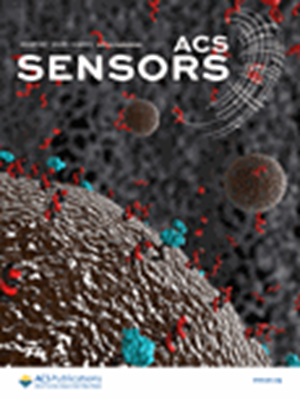Ratiometric Fluorescent Sensors for Real-Time Monitoring Cellular Autophagy Levels during Diabetic Wound Healing
IF 8.2
1区 化学
Q1 CHEMISTRY, ANALYTICAL
引用次数: 0
Abstract
Hard-healing wounds are a serious issue faced by diabetic patients, and the cellular autophagy level is closely related to the wound healing progress. However, it is difficult to monitor the real-time autophagy levels in living organisms. In this work, we provided a new autophagy fluorescent sensor IN-NH2 based on the modification of 2-substituted quinoline, giving an excellent ability to quantify the pH fluctuation in lysosomes during autophagy. This sensor was successfully applied in the real-time monitoring of autophagy levels in a wound healing model of diabetic rats, showing potential for exploring the internal mechanism between autophagy and disease progression.

用于实时监测糖尿病伤口愈合过程中细胞自噬水平的比例荧光传感器
创面难愈合是糖尿病患者面临的一个严重问题,细胞自噬水平与创面愈合进展密切相关。然而,实时监测生物体内的自噬水平是困难的。在这项工作中,我们提供了一种基于2-取代喹啉修饰的新型自噬荧光传感器In - nh2,它具有很好的量化自噬过程中溶酶体pH波动的能力。该传感器成功应用于糖尿病大鼠创面愈合模型中自噬水平的实时监测,为探索自噬与疾病进展的内在机制提供了可能。
本文章由计算机程序翻译,如有差异,请以英文原文为准。
求助全文
约1分钟内获得全文
求助全文
来源期刊

ACS Sensors
Chemical Engineering-Bioengineering
CiteScore
14.50
自引率
3.40%
发文量
372
期刊介绍:
ACS Sensors is a peer-reviewed research journal that focuses on the dissemination of new and original knowledge in the field of sensor science, particularly those that selectively sense chemical or biological species or processes. The journal covers a broad range of topics, including but not limited to biosensors, chemical sensors, gas sensors, intracellular sensors, single molecule sensors, cell chips, and microfluidic devices. It aims to publish articles that address conceptual advances in sensing technology applicable to various types of analytes or application papers that report on the use of existing sensing concepts in new ways or for new analytes.
 求助内容:
求助内容: 应助结果提醒方式:
应助结果提醒方式:


